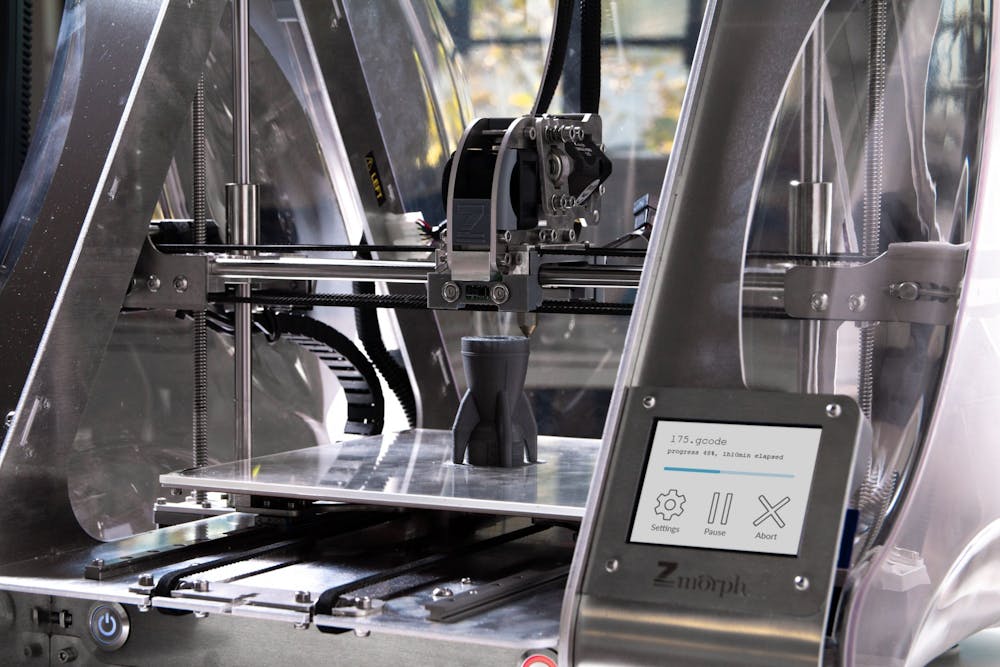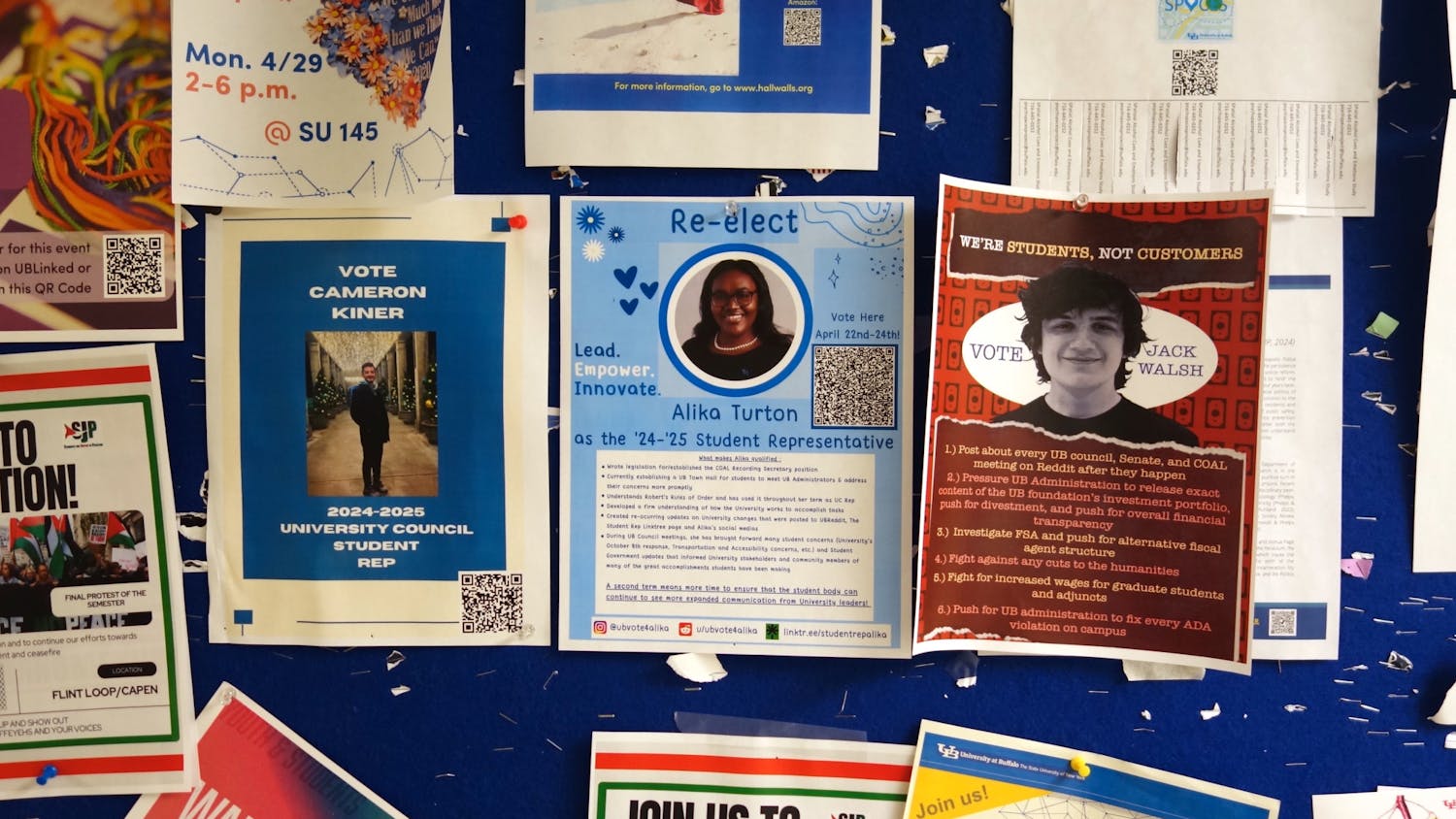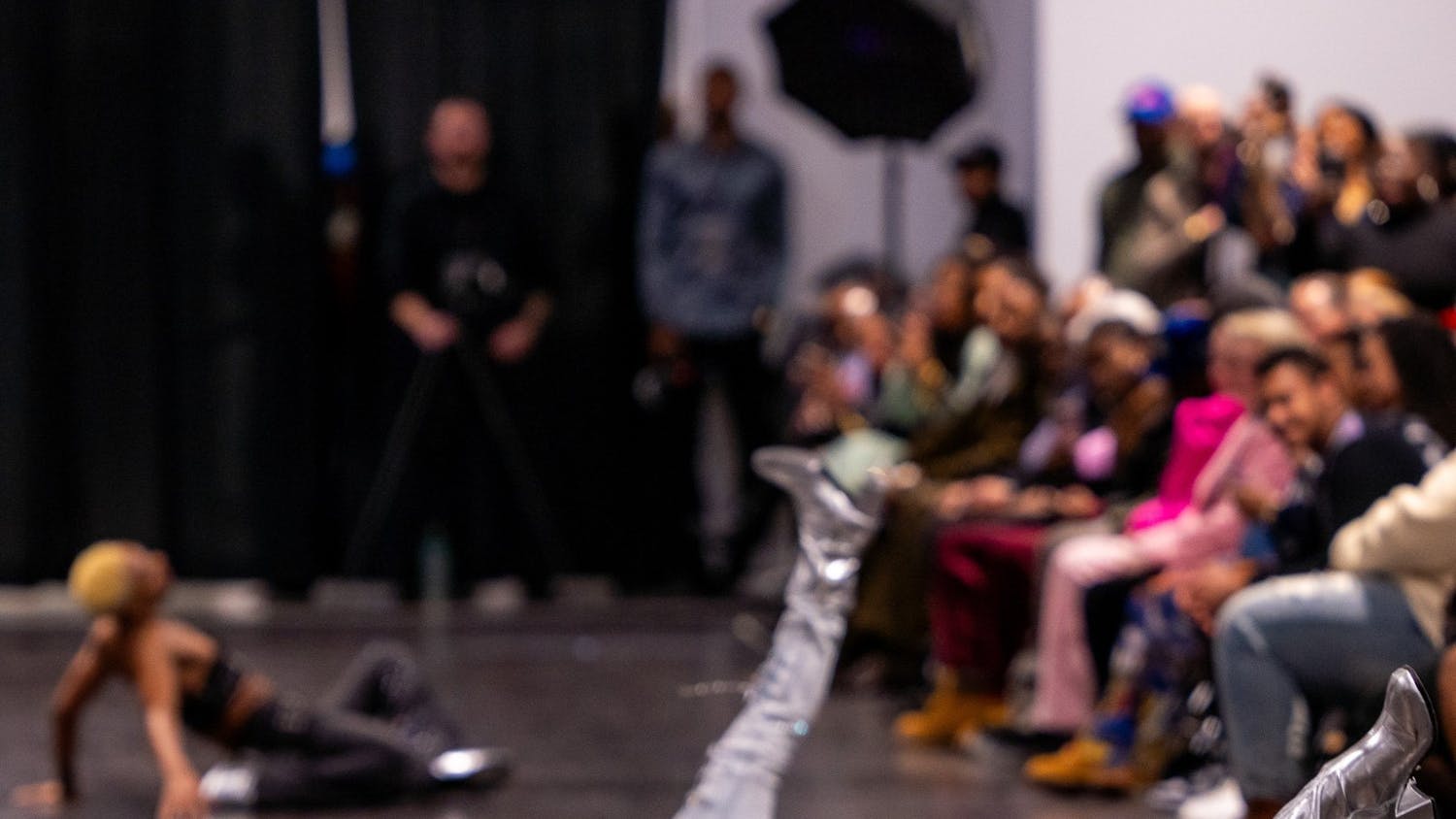Every day, 17 people die while waiting for organ transplants.
There is simply not enough supply for the needed demand.
Enter Ruogang Zhao, an associate biomedical engineering professor, and Chi Zhou, an associate professor of industrial and systems engineering. The two UB faculty members are creating a fast hydrogel stereolithography technology printing (FLOAT) method that could develop 3D printed organs and save lives.
Stereolithography is a 3D printing technique that projects a laser beam at a vat of liquid. Whatever the light hits, the liquid solidifies.
FLOAT uses the laser beam to create hydrogels, which are gels created using hydrophilic polymer chains and are used to absorb liquids. Putting multiple hydrogels together with living cells gives people the ability to print organs for the human body.
The professors released a video showing a 3D printed hand to demonstrate how quickly the technique works. The video is a seven second timelapse, but is sped-up from 19 minutes. Conventional 3D printing methods would have taken upwards of six hours.
“I know that one of the biggest challenges in tissue engineering is to create vascularized large-size tissues,” Zhao, who works with engineered tissue, said.
The pair is combining Zhao’s experience with engineered tissue with Zhou’s expertise in printing system development. They hope Zhou’s technology can help solve problems in large-size tissue fabrication.
This technology would allow the two to potentially create “large size tissues,” which would help them inch closer to generating engineered replacement tissues and organs. FLOAT uses fast printing technology, which can significantly reduce cellular damages.
Biomedical engineers and tissue engineers hope to use FLOAT to create replacement tissue or organs for repairing tissue damages caused by trauma or surgical ablation.
“The ultimate goal is to produce real organs for transplantation,” Zhao said.
Dan Eastman is the assistant managing editor and can be reached at danielson.eastman@ubspectrum.com

Dan Eastman is the assistant managing editor at The Spectrum. He is a senior geography major who loves Starbucks iced americano. When he isn’t writing and editing he is trying to find the best donut and cookie shops in Buffalo. He can be found on Twitter @TheEastMan2000.





